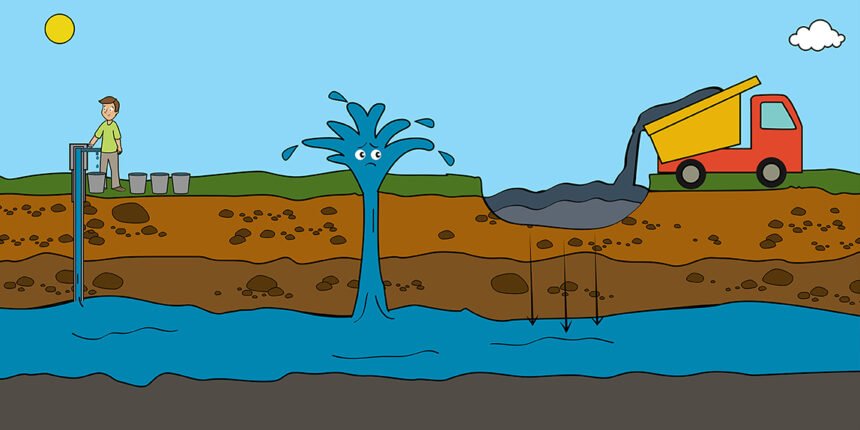Water is essential for life, and one of the ways that humans have obtained water for centuries is by digging wells. Wells are holes in the ground that reach below the water table, the level at which the ground is saturated with water. But where does the water in the wells come from? Is it from underground rivers, as some people might imagine? The answer is no, most wells do not get their water from underground rivers, but instead from aquifers, which are layers of rock and soil that contain water in their pores and cracks1.
What are Aquifers?: underground water
Aquifers are underground reservoirs of water that are formed by the infiltration of rain, snow, and surface water into the ground. The water seeps through the spaces between the soil particles and the cracks in the rocks, until it reaches a depth where the ground is completely filled with water. This depth is called the water table, and it marks the boundary between the unsaturated zone, where the ground contains both air and water, and the saturated zone, where the ground contains only water2.
Aquifers can vary in size, shape, depth, and composition, depending on the geology and climate of the area. Some aquifers are confined, meaning that they are bounded by impermeable layers of rock or clay that prevent the water from escaping or mixing with other sources. Other aquifers are unconfined, meaning that they are open to the surface and can be recharged by precipitation or surface water. Some aquifers are connected to each other, forming a network of water flow, while others are isolated and independent2.
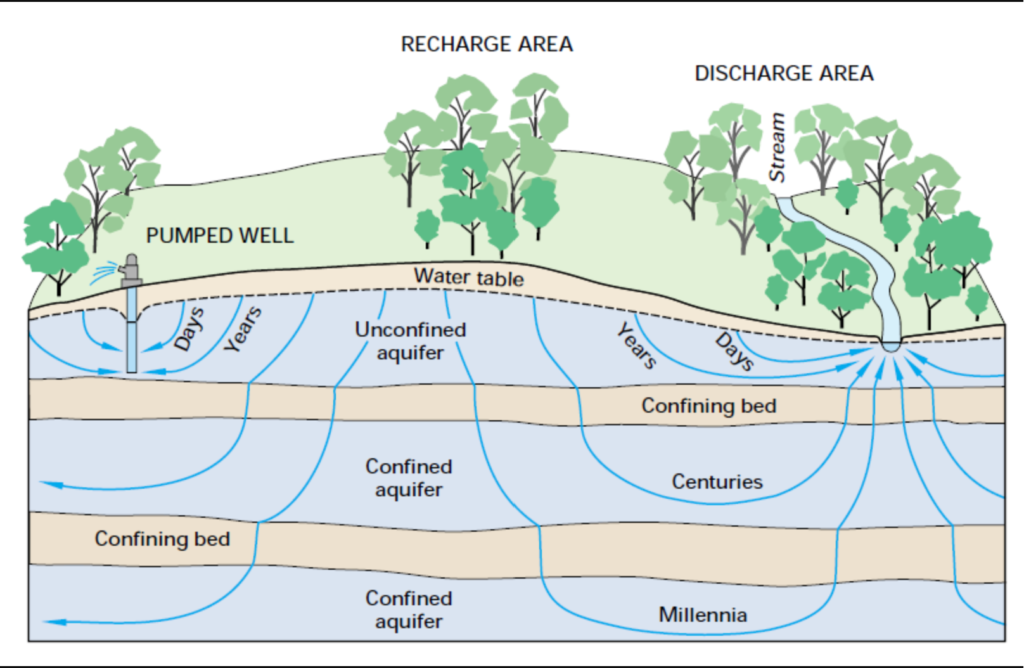
Also read: China’s Nuclear-Powered Mission To Neptune
Aquifers are not like underground lakes or rivers, where the water is free-flowing and visible. Rather, aquifers are like sponges or honeycombs, where the water is stored and transported in the small spaces within the rocks or soil. The water in aquifers moves very slowly, usually less than a few meters per day, and is influenced by the pressure, gradient, and permeability of the ground. The water can also be affected by the chemical and biological processes that occur in the aquifer, such as dissolution, precipitation, oxidation, reduction, and decomposition2.
How do Wells Work?
Wells are artificial structures that allow humans to access the water in aquifers. Wells are usually drilled or dug into the ground, until they reach below the water table and penetrate the aquifer. The water in the aquifer then flows into the well, filling it up to the level of the water table. The water can then be extracted from the well by various methods, such as buckets, pumps, or pipes3.
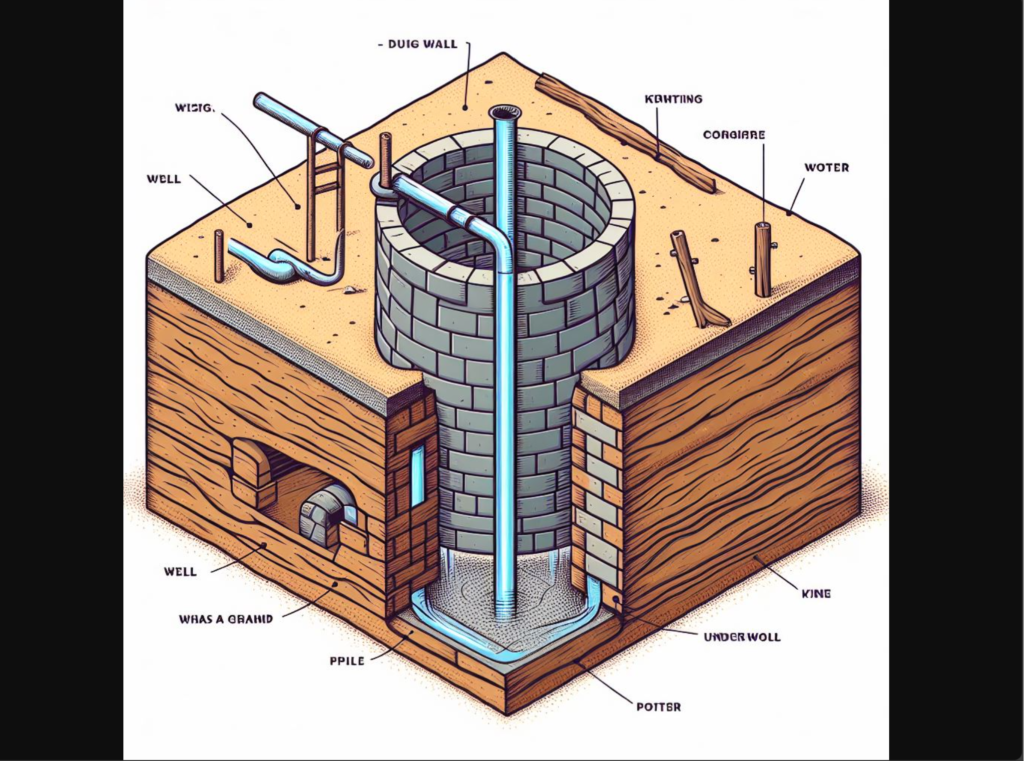
Wells work because of the hydrostatic pressure, which is the pressure exerted by the weight of the water in the aquifer. The hydrostatic pressure pushes the water up the well, until it reaches a balance with the atmospheric pressure, which is the pressure exerted by the weight of the air above the ground. The water level in the well is called the static water level, and it indicates the natural pressure and availability of the water in the aquifer3.
When water is pumped out of the well, the water level in the well drops, creating a cone of depression around the well. This cone of depression lowers the pressure and the water table in the vicinity of the well, causing more water to flow from the surrounding aquifer into the well. The water level in the well is then called the pumping water level, and it indicates the rate and efficiency of the water extraction from the aquifer3.
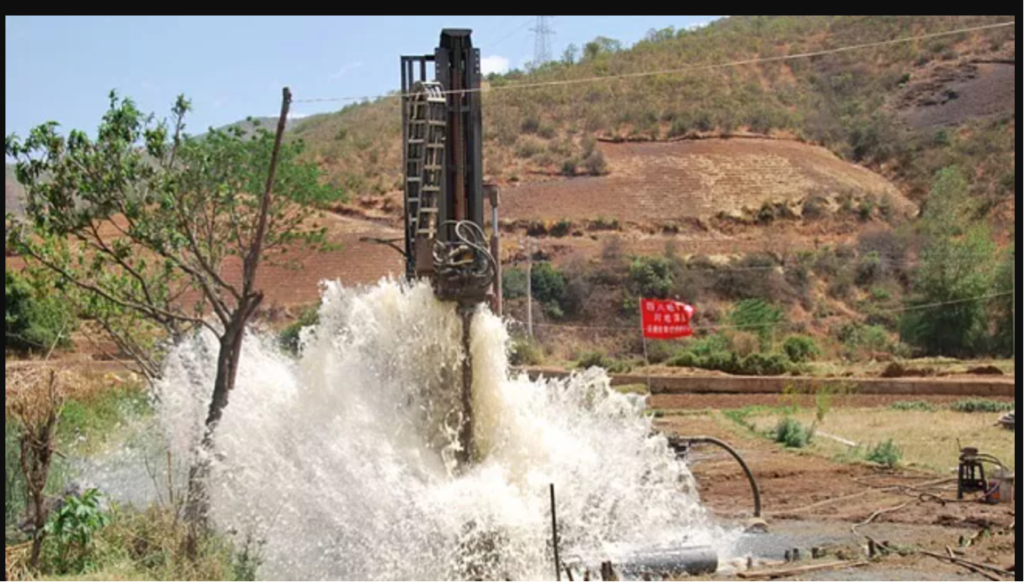
However, wells also face many challenges and risks, such as contamination, depletion, and interference. Wells can be contaminated by natural or human-made pollutants, such as bacteria, viruses, chemicals, pesticides, fertilizers, and waste, that can enter the aquifer through the well or through the surface. Wells can also be depleted by overexploitation, climate change, or land use change, that can reduce the recharge or increase the discharge of the aquifer. Wells can also interfere with each other, or with the natural flow of the aquifer, causing changes in the water level, pressure, quality, and quantity4.
Therefore, wells need to be carefully designed, constructed, maintained, and monitored, to ensure their sustainability and safety. Wells also need to be regulated and managed, to ensure their equitable and efficient use. Wells also need to be integrated with other sources and methods of water supply and conservation, to ensure the protection and enhancement of the aquifer and the environment4.
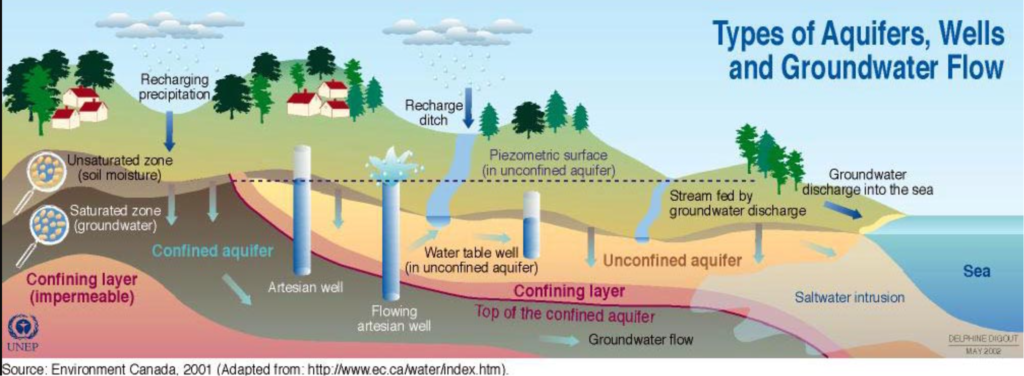
Wells are holes in the ground that reach below the water table and tap into the water in aquifers. Aquifers are underground reservoirs of water that are stored and transported in the pores and cracks of rocks and soil. Wells are not fed by underground rivers, but by the infiltration and movement of water in the ground. Wells are vital and valuable sources of water for humans, but they also pose many challenges and risks that need to be addressed and overcome. Wells are ancient and modern solutions to the human need for water.
Conclusion: Nourishing Communities from Below
The practice of drawing water from underground rivers through wells stands as a testament to human ingenuity in harnessing the Earth’s hidden resources. From ancient civilizations to modern communities, this age-old technique continues to provide a lifeline, nourishing arid lands, sustaining agriculture, and quenching the thirst of communities worldwide. As we peer into the depths of wells, we glimpse not only into the subterranean waterways but also into the resilience and resourcefulness of human societies that have long depended on the sustenance flowing from the underground rivers beneath our feet.
Also read : Why Are Some Planets Surrounded By Planetary Rings?







